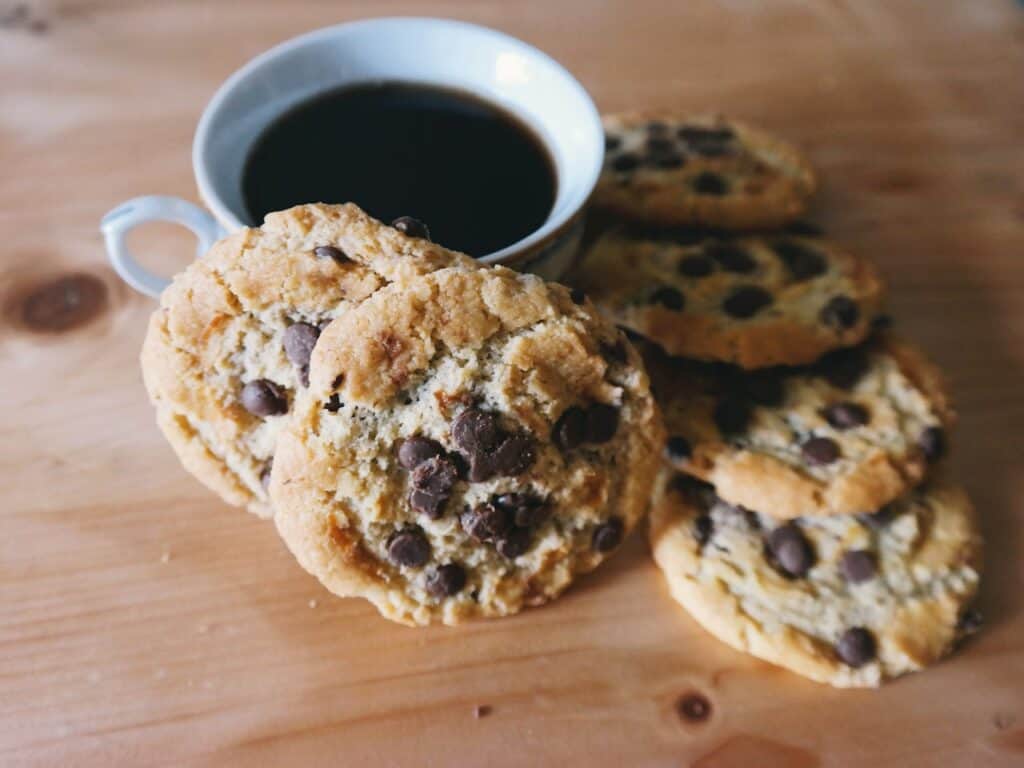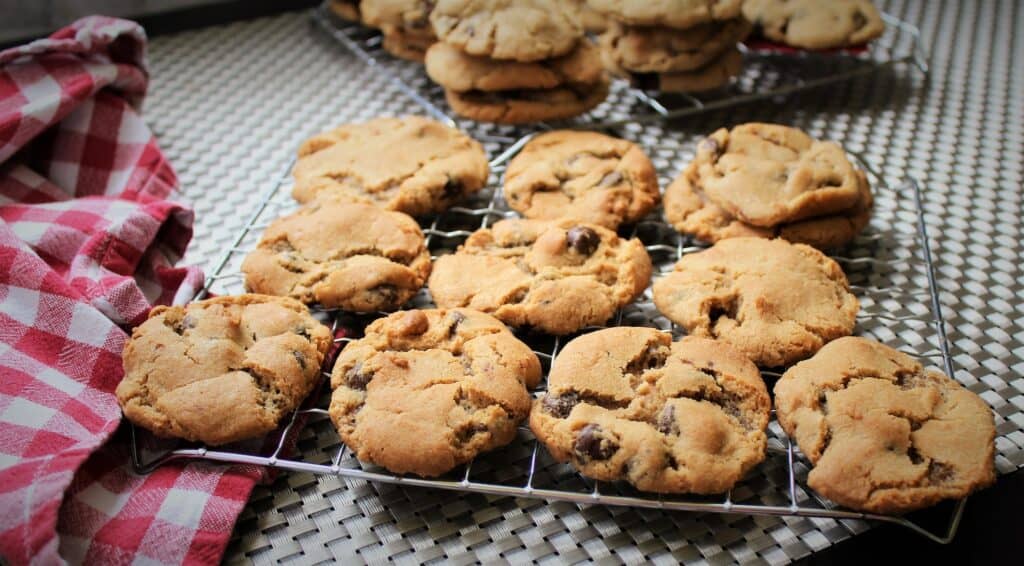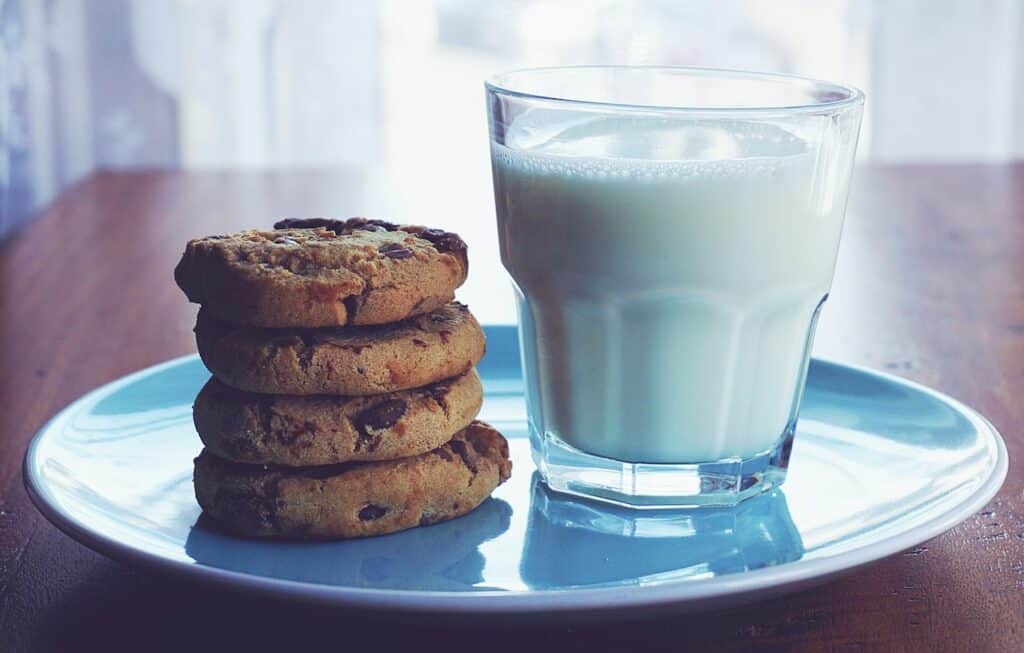Lactation cookies have become a popular choice among new mothers looking to boost their milk supply. These cookies are specifically designed to contain ingredients that promote lactation and are said to help increase milk production. However, many new mothers are unsure of when they should start eating lactation cookies and how often they should consume them.
Understanding when to start eating lactation cookies is an important consideration for new mothers. While some women may choose to start eating them immediately after giving birth, others may wait until they experience a decrease in milk supply. Additionally, it is important to note that lactation cookies should not be used as a substitute for a healthy and balanced diet, but rather as a supplement to support milk production.
Key Takeaways
- Lactation cookies are designed to contain ingredients that promote lactation and increase milk production.
- New mothers should consider when to start eating lactation cookies based on their individual needs and should not rely on them as a substitute for a healthy diet.
- Consulting with a lactation consultant or doctor can provide valuable guidance on the use of lactation cookies.
Understanding Lactation Cookies
Lactation cookies are a popular snack among breastfeeding mothers who want to increase their milk supply. These cookies are made with various ingredients that are believed to boost lactation, such as oats, flaxseed, brewer’s yeast, and fenugreek.

Common Ingredients in Lactation Cookies:
-
Oats: Oats are a good source of iron, fiber, and protein, and are believed to help increase milk production.
-
Flaxseed: Flaxseed is rich in omega-3 fatty acids and lignans, which are plant compounds that may help increase milk supply.
-
Brewer’s Yeast: Brewer’s yeast is a type of yeast that is used in beer making. It is high in B vitamins and protein, and is believed to help increase milk production.
-
Fenugreek: Fenugreek is an herb that is commonly used in Indian cuisine. It is believed to help increase milk production, but more research is needed to confirm its effectiveness.
Homemade lactation cookies can be made with these ingredients, as well as other ingredients like coconut oil, nuts, and chocolate chips. However, it is important to note that lactation cookies should not be used as a substitute for a healthy and balanced diet.
It is recommended that breastfeeding mothers wait until their milk supply is established before trying lactation cookies. This typically occurs within the first few weeks after giving birth. It is also important to consult with a healthcare provider before trying lactation cookies, especially if there are concerns about milk supply or any underlying health conditions.
The Role of Diet in Breastfeeding

A healthy diet is essential for a breastfeeding mother. It is important to consume enough nutrients and calories to support milk production and maintain maternal health. A nutrient-dense diet that is high in protein, healthy fats, and complex carbohydrates is recommended for breastfeeding mothers.
Breastfeeding requires extra calories, as the body burns approximately 500 calories per day to produce milk. It is important to consume enough calories to meet this increased demand and prevent weight loss. However, excessive calorie intake should be avoided, as it can lead to weight gain.
In addition to calories, breastfeeding mothers need to consume adequate amounts of nutrients. Key nutrients include protein, calcium, iron, and vitamin D. A healthy diet that includes a variety of fruits, vegetables, whole grains, lean protein sources, and low-fat dairy products can provide these essential nutrients.
Healthy fats are also important for breastfeeding mothers, as they are a source of energy and help support brain development in infants. Omega-3 fatty acids, found in fatty fish, flaxseeds, and walnuts, are particularly important for brain development.
Overall, a healthy diet that is nutrient-dense and provides adequate calories is essential for breastfeeding mothers. It is important to consult with a healthcare provider or registered dietitian to ensure that nutrient needs are being met.
How Lactation Cookies Boost Milk Supply

Lactation cookies are a popular snack for breastfeeding mothers who are looking to increase their milk supply. These cookies are made with ingredients that are believed to help boost milk production, such as oats, brewer’s yeast, and flaxseed.
One of the main ways that lactation cookies can help boost milk supply is by increasing the mother’s calorie intake. Breastfeeding requires a lot of energy, and lactation cookies can provide the extra calories that a mother needs to keep up with the demands of breastfeeding.
In addition to providing extra calories, lactation cookies also contain ingredients that are believed to help increase milk production. For example, oats are a good source of iron, which is important for milk production. Brewer’s yeast is a rich source of B vitamins, which are essential for lactation. Flaxseed is high in omega-3 fatty acids, which can help to improve the quality of breast milk.
While lactation cookies can be a helpful tool for mothers who are struggling with low milk supply, it is important to remember that they are not a magic solution. Breastfeeding is a complex process, and there are many factors that can impact milk production. Mothers who are concerned about their milk supply should speak with a lactation consultant or healthcare provider for personalized advice and support.
Overall, lactation cookies can be a nutritious and tasty snack for breastfeeding mothers. While they may help to boost milk supply in some cases, they should be used in conjunction with other lactation support measures, such as frequent breastfeeding and proper hydration.
When and How to Start Eating Lactation Cookies
Lactation cookies are a popular snack for new moms who want to boost their milk supply. But when should you start eating them, and how many should you have each day?

Most lactation cookie recipes are designed to be eaten in the morning, as this is when milk production tends to be highest. However, some moms find that eating them throughout the day is just as effective. It’s really up to you to decide when is best for your body.
As for how many cookies to eat, it’s recommended to start with one or two per day and gradually increase to three or four if needed. It’s important to remember that lactation cookies should not be used as a substitute for a healthy, balanced diet.
New moms can start eating lactation cookies as soon as they feel comfortable doing so. Some moms may choose to wait until their milk supply has regulated, which typically happens around 6-12 weeks postpartum. However, there is no harm in starting earlier if you feel like it could be beneficial.
When selecting a lactation cookie recipe, it’s important to choose one that is made with natural ingredients and has been tested for effectiveness. Some popular ingredients in lactation cookies include oats, brewer’s yeast, and flaxseed.
In summary, new moms can start eating lactation cookies whenever they feel comfortable doing so, and should aim to eat one or two per day to start. It’s important to choose a recipe made with natural ingredients and not use lactation cookies as a substitute for a healthy diet.
Potential Side Effects and Considerations
While lactation cookies are generally safe and effective for increasing milk supply, there are some potential side effects and considerations to keep in mind.

One common side effect is gas and bloating. This is often caused by the high fiber content in lactation cookies, particularly if they contain flax seeds. To minimize these effects, it is recommended to start with a small serving size and gradually increase as tolerated.
Lactation cookies can also affect hormone levels, as they contain ingredients such as oats and brewer’s yeast that are thought to stimulate milk production. Women who have a history of hormone-sensitive conditions, such as breast cancer, should consult with their healthcare provider before consuming lactation cookies.
Weight gain is another consideration, as lactation cookies are often high in calories and sugar. Women who are trying to lose weight or maintain a healthy weight should be mindful of their overall calorie intake and limit their consumption of lactation cookies accordingly.
In some cases, lactation cookies can cause diarrhea or upset stomach. This may be due to an intolerance or allergy to one or more of the ingredients. If these symptoms persist, it is recommended to stop consuming lactation cookies and consult with a healthcare provider.
Constipation and headaches are also potential side effects, although they are less common. Women who experience these symptoms should speak with their healthcare provider to determine if lactation cookies could be the cause.
Finally, lactation cookies can cause gassiness in both the mother and baby. To minimize this effect, it is recommended to consume lactation cookies in moderation and monitor your baby’s reaction to them.
Overall, lactation cookies can be a safe and effective way to increase milk supply. However, it is important to be aware of the potential side effects and considerations before incorporating them into your diet.
Lactation Cookies and Pumping
When it comes to increasing milk supply, lactation cookies can be a helpful addition to a breastfeeding mother’s diet. These cookies are typically made with ingredients like oats, brewer’s yeast, and flaxseed, which are believed to boost milk production. But when is the best time to start eating lactation cookies, especially in relation to pumping?

First and foremost, it’s important to remember that lactation cookies should not be relied on as the sole means of increasing milk supply. A breastfeeding mother should also be pumping regularly to stimulate milk production and ensure that her baby is getting enough milk.
With that in mind, lactation cookies can be incorporated into a breastfeeding mother’s diet as early as she likes. However, it’s important to note that lactation cookies are not a quick fix. It can take a few days or even a week of consistent consumption before a mother sees an increase in milk supply.
When it comes to pumping, lactation cookies can be eaten before or after a pumping session. Some mothers find that eating a lactation cookie before pumping helps to increase their milk output during the session. Others prefer to eat a cookie as a snack after pumping, as a way to replenish their energy and nutrients.
Ultimately, lactation cookies can be a helpful tool for breastfeeding mothers looking to increase their milk supply. However, they should be used in conjunction with regular pumping sessions and a healthy, balanced diet.
The Role of Galactagogues in Lactation Cookies
Galactagogues are substances that are believed to increase milk production in lactating women. Lactation cookies are a popular food item that contains galactagogues, among other ingredients. The use of galactagogues in lactation cookies is based on the idea that they can help increase milk supply in breastfeeding mothers.

One of the main galactagogues found in lactation cookies is fennel. Fennel is a plant that contains phytoestrogens, which are plant estrogens that are believed to mimic the effects of estrogen in the body. Estrogen is known to play a role in milk production, and it is thought that the phytoestrogens in fennel can help increase prolactin levels, which is the hormone responsible for milk production.
Fennel seeds are often used in lactation cookies because they contain a high concentration of phytoestrogens. In addition to fennel, other galactagogues that are commonly found in lactation cookies include oats, brewer’s yeast, and flaxseed. These ingredients are believed to help increase milk production by providing the body with the nutrients it needs to produce more milk.
It is important to note that while galactagogues may be helpful for some women, they are not a substitute for proper breastfeeding techniques and support. Women who are struggling with milk production should seek the advice of a lactation consultant or healthcare provider before relying solely on galactagogues.
Overall, the role of galactagogues in lactation cookies is to provide breastfeeding mothers with a natural way to increase milk production. While the science behind galactagogues is not yet fully understood, many women have reported positive results from using lactation cookies and other galactagogue-containing foods.
Nutritional Value of Lactation Cookies
Lactation cookies are a popular snack for new mothers who want to increase their milk supply. These cookies are specially formulated with ingredients that are believed to help boost lactation. In addition to their potential lactation-boosting properties, lactation cookies also offer several nutritional benefits.
1. Iron
Iron is essential for the production of hemoglobin, which carries oxygen in the blood. Lactation cookies are often made with ingredients that are high in iron, such as oats and brewer’s yeast. Iron is particularly important for breastfeeding mothers, as they may experience an increased need for this nutrient.
2. Fiber
Fiber is important for maintaining healthy digestion and preventing constipation. Lactation cookies can be a good source of fiber, depending on the ingredients used. Oats, for example, are a good source of both soluble and insoluble fiber.
3. Zinc
Zinc is important for immune function and wound healing. It is also important for the production of milk. Lactation cookies may contain ingredients that are high in zinc, such as flaxseed and brewer’s yeast.
4. B Vitamins
B vitamins are important for energy production and nervous system function. Lactation cookies may contain ingredients that are high in B vitamins, such as oats and brewer’s yeast.
5. Omega-3 Fatty Acids
Omega-3 fatty acids are important for brain and eye development in infants. Lactation cookies may contain ingredients that are high in omega-3 fatty acids, such as flaxseed.
6. Selenium
Selenium is important for immune function and thyroid function. Lactation cookies may contain ingredients that are high in selenium, such as oats and brewer’s yeast.
7. DHA
DHA is an omega-3 fatty acid that is important for brain and eye development in infants. Lactation cookies may contain ingredients that are high in DHA, such as flaxseed.
8. Lignans
Lignans are phytoestrogens that may have a positive effect on lactation. Lactation cookies may contain ingredients that are high in lignans, such as flaxseed.
9. B-Complex Vitamins
B-complex vitamins are important for energy production and nervous system function. Lactation cookies may contain ingredients that are high in B-complex vitamins, such as oats and brewer’s yeast.
10. Alpha-Linolenic Acid
Alpha-linolenic acid is an omega-3 fatty acid that is important for brain and eye development in infants. Lactation cookies may contain ingredients that are high in alpha-linolenic acid, such as flaxseed.
Overall, lactation cookies can be a nutritious snack for breastfeeding mothers. However, it is important to keep in mind that they should not be used as a substitute for a balanced diet.
Consulting with a Lactation Consultant or Doctor
If a mother is unsure about when to start eating lactation cookies, it is advisable to consult with a lactation consultant or doctor. These professionals can provide valuable guidance and support to mothers who are struggling with breastfeeding or milk supply issues.

A lactation consultant is a professional who specializes in helping mothers breastfeed their babies. They are typically certified by the International Board of Lactation Consultant Examiners (IBLCE) and have extensive training and experience in lactation management. A lactation consultant can provide advice on a wide range of breastfeeding issues, including milk supply problems, latch difficulties, and nipple pain.
A doctor can also provide valuable guidance to mothers who are struggling with breastfeeding. They can help diagnose any medical issues that may be impacting milk supply, such as hormonal imbalances or thyroid disorders. They can also provide advice on how to safely increase milk supply and offer recommendations for lactation supplements or medications.
When consulting with a lactation consultant or doctor, it is important to be open and honest about any breastfeeding challenges or concerns. This will help them provide the most appropriate advice and support. Mothers should also feel free to ask questions and seek clarification on any recommendations or suggestions provided.
In summary, consulting with a lactation consultant or doctor can be a valuable resource for mothers who are unsure about when to start eating lactation cookies. These professionals can provide guidance and support to help mothers achieve their breastfeeding goals and ensure the health and wellbeing of their babies.
Lactation Cookies and New Moms
Lactation cookies are a popular snack among new moms who are breastfeeding. These cookies are made with ingredients that are believed to help increase milk supply and provide essential nutrients for both the mother and baby. But when is the right time to start eating lactation cookies?

Some new moms may start eating lactation cookies right after giving birth, while others may wait a few weeks until their milk supply is established. It is important to note that lactation cookies should not be used as a substitute for a healthy diet, but rather as a supplement to provide additional nutrients and support lactation.
Pregnancy and childbirth can be stressful on a woman’s body, and lactation cookies can help provide comfort and nourishment during this time. However, it is important to consult with a healthcare provider before starting any new diet or supplement regimen, especially during pregnancy and breastfeeding.
Overall, lactation cookies can be a helpful addition to a new mom’s diet, but it is important to use them in moderation and in conjunction with a healthy and balanced diet.
Scientific Evidence and Anecdotal Testimonials
When it comes to lactation cookies, there is a mix of scientific evidence and anecdotal testimonials to consider. While some studies have shown that certain ingredients in lactation cookies, such as oats and brewer’s yeast, may help increase milk production, the overall scientific evidence is limited.

One study published in the Journal of Obstetric, Gynecologic, & Neonatal Nursing found that women who ate lactation cookies containing oats and brewer’s yeast had a higher milk volume than those who did not. However, the study was small and only included 63 women.
Another study published in the Journal of Human Lactation found that lactation cookies containing fenugreek, flaxseed, and brewer’s yeast helped increase milk production in breastfeeding mothers. However, this study also had a small sample size of 21 women.
While these studies provide some scientific evidence for the effectiveness of lactation cookies, it is important to note that they are limited in scope and more research is needed to fully understand the benefits.
On the other hand, anecdotal testimonials from breastfeeding mothers have been overwhelmingly positive. Many mothers report an increase in milk production after eating lactation cookies, and some even claim that they notice a difference within hours of eating them.
Overall, while the scientific evidence for lactation cookies is limited, anecdotal testimonials suggest that they may be worth trying for breastfeeding mothers who are struggling with milk production. As with any dietary supplement, it is important to consult with a healthcare provider before incorporating lactation cookies into your diet.
Understanding Supply and Demand in Breastfeeding
Breastfeeding is a natural process that is governed by the principles of supply and demand. The more a baby nurses, the more milk the mother’s body will produce. Conversely, if the baby is not nursing frequently enough, the mother’s milk supply may decrease. Understanding these principles is essential for mothers who want to establish and maintain a healthy milk supply.

Low supply and oversupply are two common milk supply issues that can occur. Low supply occurs when the mother’s body is not producing enough milk to meet the baby’s needs. This can be caused by a variety of factors, including infrequent nursing, poor latch, or certain medications. Oversupply, on the other hand, occurs when the mother’s body produces more milk than the baby needs. This can result in engorgement, discomfort, and even mastitis.
Frequent nursing and cluster feeding are two strategies that can help regulate milk supply. Frequent nursing ensures that the baby is getting enough milk, while also stimulating the mother’s body to produce more milk. Cluster feeding, which involves nursing more frequently during certain times of the day, can also help increase milk supply.
It is important to note that every mother’s body is different, and milk supply can vary based on a variety of factors. Some mothers may have an oversupply of milk, while others may struggle with low supply. If a mother is experiencing issues with milk supply, it is important to seek advice from a lactation consultant or healthcare provider.
Overall, understanding the principles of supply and demand in breastfeeding is essential for establishing and maintaining a healthy milk supply. By nursing frequently and paying attention to their body’s cues, mothers can ensure that their baby is getting enough milk while also promoting a healthy milk supply.
Homemade Vs Store-Bought Lactation Cookies
When it comes to lactation cookies, there are two options: homemade or store-bought. Both options have their pros and cons, and it ultimately comes down to personal preference.

Homemade Lactation Cookies
Homemade lactation cookies are a great option for those who want to control the ingredients in their cookies. By making them at home, you can use natural ingredients and avoid any added sugars or preservatives. Plus, making them yourself can be a fun and rewarding experience.
One ingredient to consider adding to homemade lactation cookies is wheat germ. Wheat germ is a great source of protein and energy, which can be beneficial for new mothers. Additionally, using coconut oil instead of butter can provide a healthier fat option.
However, making lactation cookies at home can be time-consuming and require more effort than simply buying them at the store. It can also be difficult to get the right texture and consistency for the cookies.
Store-Bought Lactation Cookies
Store-bought lactation cookies are a convenient option for those who don’t have the time or desire to make them at home. They can be found at most health food stores and online retailers.
One thing to keep in mind when buying store-bought lactation cookies is the sugar content. Some brands may add more sugar than necessary, which can be counterproductive for lactation. It’s important to read the labels and choose a brand with natural ingredients and a reasonable amount of sugar.
Store-bought lactation cookies can also be a great option for on-the-go snacking or as a dessert. They come in a variety of flavors and can satisfy a sweet tooth while also providing lactation support.
In conclusion, whether to choose homemade or store-bought lactation cookies depends on personal preference and priorities. Homemade cookies allow for more control over ingredients, while store-bought cookies offer convenience and a wider variety of flavors.
Lactation Supplements Vs Lactation Cookies
When it comes to increasing milk supply, there are many options available to nursing mothers. Lactation supplements and lactation cookies are two popular choices. While both can be effective, there are some key differences to consider.

Lactation supplements are typically made with ingredients like beta-glucan and phytoestrogen, which are believed to help stimulate milk production. They come in various forms, including capsules, teas, and powders, and can be purchased online or at health food stores.
Lactation cookies, on the other hand, are a tasty treat that can also help increase milk supply. They are made with ingredients like oats, brewer’s yeast, and flaxseed, which are all believed to have lactogenic properties. Lactation cookies can be purchased online or from specialty bakeries.
One advantage of lactation supplements is that they are often more concentrated than lactation cookies, which means they may be more effective at increasing milk supply. However, some women may prefer lactation cookies because they are a more enjoyable way to boost milk production.
It is important to note that consuming too much of either lactation supplements or lactation cookies can have negative consequences. Overconsumption of lactation supplements can lead to an oversupply of milk, which can cause discomfort and other issues. Overconsumption of lactation cookies can lead to weight gain and other health problems.
It is also important to remember that milk production is influenced by factors like growth spurts and the release of oxytocin during breastfeeding. While lactation supplements and lactation cookies can be helpful, they should not be relied on as the sole method for increasing milk supply.
Overall, both lactation supplements and lactation cookies can be effective at increasing milk supply. Nursing mothers should consider their individual needs and preferences when deciding which option to choose.
Also, do not miss to check out some related posts:
Frequently Asked Questions
What are the best lactation snacks to eat?
In addition to lactation cookies, some other lactation snacks to consider include oatmeal, flaxseed, almonds, and leafy green vegetables. These foods contain nutrients that can help with milk production.
The effects of lactation cookies can vary from person to person. Some women may notice an increase in milk production within a few days, while others may take longer. It is important to remember that lactation cookies are not a magic solution and should be used in conjunction with other lactation support methods.
Lactation cookies are generally considered safe for both mother and baby. However, it is important to read the ingredients carefully, especially if the mother or baby has any allergies. If you have any concerns, it is always best to consult with a healthcare provider.
There is no set recommended daily amount of lactation cookies to eat. It is important to listen to your body and not overdo it. Eating too many lactation cookies can lead to weight gain and other health issues.
The best time to start eating lactation cookies is when you feel like you need a boost in milk production. This could be as early as a few days after giving birth or later on in your breastfeeding journey. It is important to remember that lactation cookies are not a substitute for a healthy diet and other lactation support methods.

Iesha is a loving mother of 2 beautiful children. She’s an active parent who enjoys indoor and outdoor adventures with her family. Her mission is to share practical and realistic parenting advice to help the parenting community becoming stronger.
